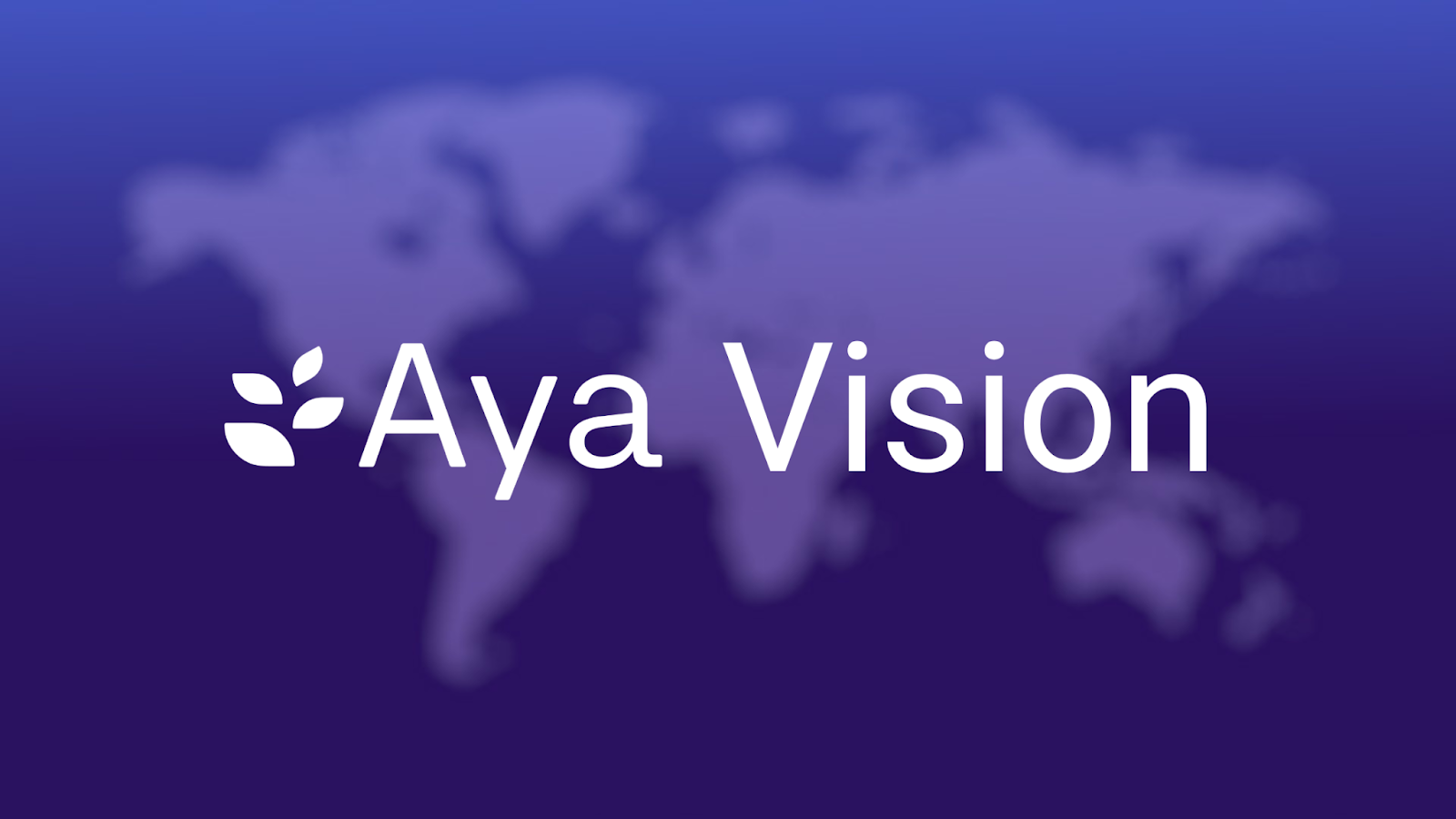
May 29, 2025
Aya Vision Explained: Advancing the Frontier of Multilingual Multimodality
Aya Vision Explained: Advancing the Frontier of Multilingual Multimodality
What if an AI could interpret text and images in 23 languages at once? Imagine explaining a situation in Spanish, asking a question in Hindi, and receiving a response in English; seamlessly. Now it's no longer an imagination. Aya Vision pushes multilingual, multimodal AI boundaries.
Language-handling AI models exist. We saw them process images. What about a model that performs both in dozens of languages with remarkable accuracy? Aya Vision, Cohere For AI's next open-weight vision-language model family, has such capacity.
I will explain Aya Vision's training and why it is setting new standards. I will also demonstrate how to use it using a few code snippets. Let's see the rest of article!
Aya Vision Architecture and Training
Aya Vision's primary processing and understanding is image-text integration. Multilingual and high-resolution image processing are difficult for traditional vision-language models. Aya Vision confronts these issues.
Aya Vision dynamically resizes and tiles images, making high-resolution inputs easy. The model extracts visual features using SigLIP2-patch14-384, an advanced vision encoder.
Aya Vision makes use of Cohere's multilingual language models, optimized to interpret and create text in 23 languages.
Try It: Image Preprocessing with Python
This short piece of code shows how Aya Vision analyzes images before feeding them into the model:
from PIL import Image
import numpy as np
def preprocess_image(image_path):
image = Image.open(image_path).convert("RGB")
resized_image = image.resize((384, 384)) # Resize as per SigLIP2 standards
image_array = np.array(resized_image) / 255.0 # Normalize pixel values
return image_array
image_features = preprocess_image("sample_image.jpg")
print("Image features shape:", image_features.shape)Pretty nice, huh? Aya Vision excels in processing high-resolution photos efficiently.
Expanding Multimodal Data: Making AI Truly Multilingual
Fun fact: Non-English languages challenge most AI models. Lack of data makes even multilingual AI function badly in underrepresented languages. That changes with Aya Vision.
First, it creates high-quality English training data using synthetic annotations. That is not all, though. It then converts this data into 23 languages. Seems simple? Not exactly. Direct translation typically creates uncomfortable, unnatural language. Aya Vision rephrases these translations to seem more natural.
Try It: Generating Image Captions with Aya Vision
Want to see how Aya Vision work? Here's how to use Python to write text descriptions for images:
from transformers import pipeline
caption_generator = pipeline("image-to-text", model="cohere/aya-vision")
image_captions = caption_generator("sample_image.jpg")
print("Generated Caption:", image_captions[0]['generated_text'])It signifies Aya Vision can interpret and describe images in languages other than English!
Fine-Tuning: Teaching Aya Vision to Think Smarter
Aya Vision does not learn once and figure things out. Supervised Fine-Tuning (SFT) occurs in two stages:
- Vision-Language Alignment: The model learns to meaningfully correlate image characteristics with text in this stage.
- Supervised Fine-Tuning: It refines its knowledge by learning from real-world multimodal datasets in 23 languages.
Try It: Fine-Tuning Aya Vision on Custom Data
Want to make Aya Vision work better for your needs? But how? Here it is:
from transformers import Trainer, TrainingArguments
training_args = TrainingArguments(
output_dir="./results",
num_train_epochs=3,
per_device_train_batch_size=4,
save_steps=10_000,
save_total_limit=2,
)
trainer = Trainer(
model="cohere/aya-vision-8b",
args=training_args,
train_dataset="multilingual_multimodal_dataset",
)
trainer.train()This lets you train Aya Vision to identify medical and legal images and text!
Merging Models for Even More Power
This is fascinating: Multiple models collectively make up Aya Vision. Aya Vision greatly increases its generative powers by combining a robust text model with a fine-tuned vision-language model.
The result? It beats Llama-3.2 90B Vision and Molmo 72B!
Benchmarking: How Good is Aya Vision?
Both AyaVisionBench and mWildVision, two new multilingual vision-language benchmarks, have shown that Aya Vision is strong. The results? Aya Vision 8B outperforms larger models.
Try It: Benchmark Aya Vision on Your Own Images
from transformers import pipeline
aya_vision = pipeline("image-to-text", model="cohere/aya-vision")
benchmark_results = aya_vision("benchmark_sample.jpg")
print("Benchmark Output:", benchmark_results[0]['generated_text'])Aya Vision's accuracy and multilinguistic capabilities make it a game-changer for multilingual images and text processing.
Scaling to 32B: The Future of Aya Vision
Aya Vision 8B is great, but 32B is better. Aya Vision 32B, one of the top open-weight multimodal models, improves accuracy, reasoning, and text generation with additional parameters.
Why This Matters in the Real World
Aya Vision is not a lab experiment; it is practical. Do you know its most interesting integration of all? WhatsApp.
Imagine sending a picture in one language and receiving a reaction in another in your conversations. We are going there with Aya Vision.
Conclusion: Why Aya Vision is a Game-Changer
Aya Vision redefines multilingual multimodal AI. Due to its advanced image processing, multilingual text, and model merging, it outperforms bigger models while being open and accessible.
The best part? Use it immediately. Built a multilingual chatbot, visual search tool, or AI-powered assistant? Aya Vision can help.
Are you ready to find out what AI can do next? Start with Aya Vision!
273 views
